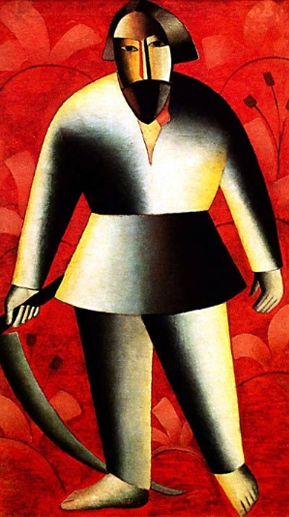Andrew Graham-Dixon on Russian avant-garde art and a Peter Howson retrospective
KAZIMIR MALEVICH'S The Reaper is a disconcerting painting that once seemed invested with the power of prophecy. Painted in the year before the outbreak of the First World War, it radically transformed an old Russian tradition of paintings of the peasant scene. Seen through Malevich's eyes, the worker, having been little more than picturesque staffage in earlier Russian painting, suddenly became an image of millenarian threat and promise. Here he stands, sickle in hand, an inscrutable robot: an image, in retrospect, of the working-class hero as both grim reaper and angel of the apocalypse.
Malevich also painted reaping women with tubular limbs in bright, metallically acid colours, toiling with the impersonal resolve of machines. They date from 1912, his busy female mechanomorphs, and they too look prophetic of later times and ideals, proto-propaganda for the achievement of Stakhanovite output norms.
Time has made these pictures seem poignant as well as prescient, emblems of the briefness with which, in early 20th-century Russia, revolutionary ideals and radical aesthetics were united. We know that the revolutionaries whose actions they seem to predict would eventually reject them. ''I consider Cubo-Futurism as the only possible way out and announce that those who will not step onto this path will be candidates for the cemetery,'' declared Malevich in 1913. He was wrong, of course: Stalin made sure that it was the Cubo-Futurists who headed down cemetery road.
Shortly after the October revolution the new Commissariat for the Enlightenment appointed Kandinsky to the post of art-buyer in chief for the Russian state. The purchases that he made amount to an object lesson in the other Russian revolution: the overturning of the aesthetic status quo which took place there, roughly, between 1906 and 1924....

Peasant season
24-09-1993

